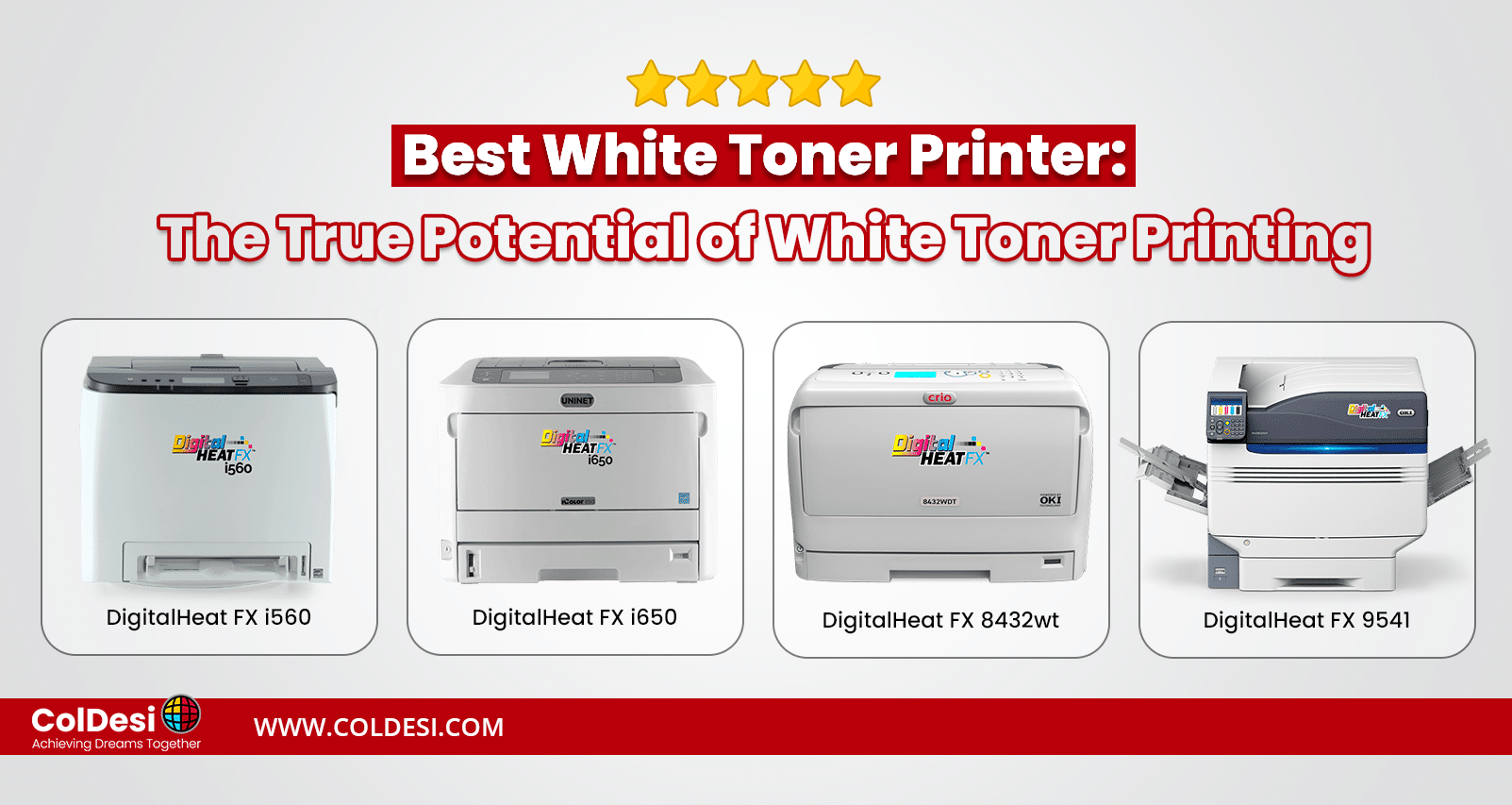You’ve worked up yourself to buy a white toner printer—whether it’s now or down the road—so you want to read up on its features, potential, and things to consider before you invest your hard-earned cash.
Well, you’ve come to the right place!
In this piece of writing, we’ll walk you through it, starting with an overview of what white toner printing is, and how it works.
From there, we’ll talk about its practical applications, what you can print with it, who it’s made for, who will get the most value out of this technology, and what you need to know before making that purchase decision.
As we work our way through this, we’ll also look at the supplies and consumables you may want to get along with it.
And finally, we’ll point you in the right direction to get your hands on all of this.
So, if this sounds like the one for you, stick around!
What is White Toner Printing?
Let’s start with the basics. First off, what exactly is white toner printing?
If you’re new to this printing method, think of it as similar to traditional color printing. However, while traditional methods work well on white paper, they often struggle with dark or colored papers.
That’s where white toner printers come in. They can transfer for both light and dark-colored substrates, as well as transparent surfaces.
This capability is thanks to a combination of white toner cartridges, CMYK (Cyan, Magenta, Yellow, Black) toners, and special translucent PET (polyethylene terephthalate) film.
All these components work together to produce vibrant, full-color prints.
Now, for those of you curious about the ‘how’ and the theory behind it all, let’s dive into that next.
How Does White Toner Printing Work?
It’s not overly complicated. The way the white toner printer works is quite simple, although things can get a bit complicated if you dive into the technical details, schematics, and engineering side of things—though we’re guessing that’s not why you’re here.
So, let’s take a look at how this printing method functions from an artist’s point of view.
Just a moment ago, you may recall, we discussed the essential components of a white toner printer that work together to produce your final print. To give you a quick refresher, these include CMYK + W toner cartridges and clear, see-through transfers, commonly known as PET film.
Now, you might already have an idea of where this is heading: your graphic is printed onto this translucent film. However, it’s done in a very specific manner. The process begins with the white toner printer applying a layer of color, followed by a base layer of white ink to form the final image.
Once the print is printed, it can be sold or stored for later. Or… transferred onto fabrics (or other substrates) using a heat-press mechanism.
Speaking of which… how about we go over some of the practical applications of this printer and the types of designs it can produce?
What Can You Print With a White Toner Printer?
You can use the printed designs (aka transfer sheets) on just about anything you would want decorated. You can apply transfers on cotton, polyester, blends, nylon, leather, neoprene, other fabrics, and many hard surfaces!
Here are a few examples of the types of products that you can decorate with the help of a white toner printer and heat press:
- T-shirts
- Hoodies
- Caps and hats
- Bags (e.g., tote bags, backpacks)
- Mouse Pads
- Ceramic Mugs
- Coasters
- Glass (such as windows)
- Aprons
- Pillowcases
- Keychains or ornaments
- Can Cooler Sleeves
- Glassware (such as drinking glasses)
- Aluminum water or thermos bottles
- And much, much more!
The list doesn’t really stop here, these are just to give you an idea of things you can make. Additionally, you can print on regular white paper, invitations, envelopes, and promotional items, like flyers or banners too.
Okay, now that you have a better understanding of what white toner printing is, how it works, and what you can make with it, next, let’s talk about who this technology is made for, who will get the most value out of it, and what you need to know before upgrading (or switching) to it.
To explore more ways to earn money with white toner printing, read THIS article:
Is White Toner Printing Right For You?
If white toner printing isn’t for everyone, then who is it for? Well, that’s a question many people would like to have answered. Maybe you’re one of them.
The gist boils down to five things:
1. Production Volume – If you’re a hobbyist, tinkerer, or novice decorator who doesn’t plan to use the printer commercially for high-volume graphic printing on a daily basis, then a white toner printer fits right in with your needs.
2. Speed – Speed may be another factor you need to consider. If you fall in any of the categories mentioned above, then you’re likely to use the printer for your personal projects or very light client or e-commerce work. Then a white toner printer is more than enough for you. Now, if speed is of the essence, you’d want to look in the direct-to-film (DTF) direction as it offers an improvement in speed, print size, and overall flexibility.
3. Ease-of-use – The focus with white toner printers is on ease-of-use! It’s compact, quiet, and low-tech, meaning you can change out the consumables, clean it, and just maintain it yourself without needing an expert’s help.
4. Cost – Combining all of the above with a low cost of entry makes it attractive for anyone on a budget.
5. Space Availability – Not everyone has the luxury of an open workspace with wide doorways, high ceilings, and ventilation systems. Many of us have just what we have, and we have to make the most of it, so white toner printers are ideal for fitting into even the smallest of rooms.
These are some of the things you have to look at (and factor in) at the time of purchase.
Next up, let’s run you through a list of essential printing supplies and consumables that are worth getting along with your printer purchase.
List of Essential White Toner Printing Supplies & Consumables
Are there any additional items to consider (or get) with your purchase of the new white toner printer?
The answer is yes, there are! Quite a few of them, actually, and we’re going to list them down below.
Now, that’s not to say you need to purchase all of them right away. Quite the opposite, you can order them as you go.
Toner Cartridges: The main consumable for white toner printers is, of course, toner! As you have learned by now, white toner printers use CMYK + W cartridges, so technically, you’d need these colors.
Transfer Paper: To create any of the items, you’ll need heat transfer paper to do it. This kind of paper has been specially treated to transfer printed designs to garments when heat is applied.
Finishing Sheets: Now, there are different types of finishing sheets available—you have your typical standard finishing sheets, Teflon sheets, and flexible finishing sheets. Each one of them serves a different purpose and gives slightly different results. However, they’re primarily used to give your design that ‘’final’’ glossy or matte look. Additionally, they can protect your heat press from stains or residue, while also safeguarding your garments from high temperatures.
Heat Tape & Dispenser: When you’re working with heat transfers, getting the placement right is key. Sometimes mid-press designs can slip around and shift. The result of that is a crooked transfer. Not something you want to see. So, that’s where heat tape comes in—it keeps those transfers from wiggling around before you press them on. It’s especially effective when paired with a dispenser. Just stretch, snip, and stick it down.
Heat Press: A heat press is a machine used to apply consistent (and timed) heat and pressure to transfer designs onto various surfaces. It works by melting the adhesive (and other components that it’s coated with) onto your desired material. The heat press typically consists of a heated platen and a flat surface where the material is placed.
Interchangeable Platens: Being able to press designs on all sorts of stuff is super important. Usually, your heat press comes with just one basic platen to start with. But if you want to speed things up and get creative with where (and on what) you press, it’s smart to have a bunch of different platens. That’s where interchangeable ones come in handy—they let you press on all kinds of cool things like shoes, hats, bags, you name it!
Heat Press Pads & Pillows: To heat press on uneven and tricky surfaces like those found on garments with lumps, folds, zippers, seams, or buttons, you can use special accessories like heat press pads and pillows. They lift up the printing area, making those unwanted objects like seams, zippers, and buttons hang off the edge. That way you can avoid messing them up, but more importantly, it allows you to apply even pressure onto the transfer paper.
Platen Covers: If at any time you find it difficult to thread the apparel on the bottom platen of the heat press, consider buying a platen cover. It’s a multifunctional add-on item; threading becomes a lot easier, and you can twist, turn, and slide apparel on and off with ease. Plus, this cover protects the lower platen from damage, residue, adhesive, and other issues that can occur during decorating.
Blanks: And let’s not forget about wholesale blank products. They’re your starting point for creating amazing designs with white toner printing. Think of them as your canvas, or blank slate, where you can meet any request or bring your (or your client’s) vision to life! Whether it’s plain t-shirts or mugs, these blank products offer endless possibilities for decoration and customization. Having a variety of blanks on hand is super important!
Read up some more on this: ”What You Need to Start a White Toner Transfer Business”
In Conclusion
White toner printers are revolutionizing the printing industry, offering versatile printing options, professional-quality prints, and increased creative opportunities.
By considering factors like print quality, printing speed, media compatibility, and cost-effectiveness, you can find the perfect white toner printer to meet your specific needs.
Whether you’re a hobbyist, tinkerer, novice decorator, designer, office professional, or photography enthusiast, investing in a white toner printer will elevate your printing capabilities and make your prints stand out.
To learn more about ColDesi’s line of White Toner printers, visit coldesi.com and Live Chat with a Pro below, or call 877.793.3278.









